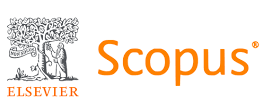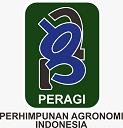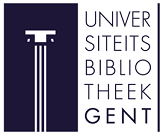Competitiveness Analysis and Factors Affecting Indonesian Rubber Exports in BRICS Plus Countries
Abstract
By leveraging its potential as a new member of BRICS, Indonesia can enhance its international trade through increased economic and trade cooperation within the group. BRICS integration can help improve Indonesia's trade balance and reduce its dependence on traditional markets, as it provides Indonesia with access to new markets and opportunities to diversify its export partners. This is the first study to analyze Indonesian rubber competitiveness and key determinants specifically across BRICS-Plus countries following official 2025 accession, providing one of the first empirical assessments in the context of Indonesia’s prospective 2025 BRICS accession. Using Revealed Comparative Advantage (RCA) and multiple linear regression methods with annual data from 2001 to 2023, the study evaluates both comparative advantage and the factors influencing export performance. The independent variables include the GDP of BRICS countries, Indonesia’s GDP, world rubber prices, exchange rate, inflation rate, population, and export restriction policy. The RCA results show that Indonesia holds a comparative advantage in most BRICS markets; however, competitiveness remains relatively weak in India and China, the two largest importers of Indonesian rubber. Regression analysis indicates that three variables significantly and positively affect Indonesia’s rubber export value, namely the GDP of BRICS nations, international rubber prices, and the rupiah exchange rate. These findings imply that macroeconomic coordination, diversification of export destinations, and stabilization of the exchange rate are crucial to enhancing Indonesia’s trade performance within BRICS. Strengthening competitiveness in key markets will be essential for Indonesia to optimize its economic gains and reinforce its position in the global rubber trade following full integration into the BRICS framework.
Keywords
Full Text:
PDFReferences
Anggrasari, H., Perdana, P., & Mulyo, J. H. (2021). Keunggulan Komparatif dan Kompetitif Rempah-Rempah Indonesia di Pasar Internasional. JURNAL AGRICA, 14(1), 9–19. https://doi.org/10.31289/agrica.v14i1.4396
Bamidele, S. (2025). BRICS Revolution: The Global Agrarian Shift Sparked by Emerging Economies. India Quarterly, 81(1), 43–58. https://doi.org/10.1177/09749284241307937
Bhat, M. A., Jamal, A., & Beg, M. N. (2022). Trade Integration and Export Aspiration: Evidence from India’s Trade in Goods with BRICS Countries. Organizations and Markets in Emerging Economies, 13(2), 490–514. https://doi.org/10.15388/omee.2022.13.90
Blavasciunaite, D., Garsviene, L., & Matuzeviciute, K. (2020). Trade balance effects on economic growth: Evidence from European Union Countries. Economies, 8(3). https://doi.org/10.3390/ECONOMIES8030054
Center for Agricultural Data and Information System Ministry of Agriculture Republic of Indonesia. (2023). Agricultural Statistics.
Collischon, M., & Eberl, A. (2020). Let’s Talk About Fixed Effects: Let’s Talk About All the Good Things and the Bad Things. KZfSS Kölner Zeitschrift Für Soziologie Und Sozialpsychologie, 72(2), 289–299. https://doi.org/10.1007/s11577-020-00699-8
Daulika, P., Peng, K.-C., & Hanani, N. (2020). Analysis on Export Competitiveness and Factors Affecting of Natural Rubber Export Price In Indonesia. Agricultural Social Economic Journal, 20(1), 39–44. https://doi.org/10.21776/ub.agrise.2020.020.1.6
Ditjenbun. (2022). Outlook Komoditas Perkebunan Karet. Pusat Data Dan Sistem Informasi Pertanian .
Dwi Sinarni Putri, R., & Siladjaja, M. (2021). Published by LPMP Imperium Pengaruh Perdagangan Internasional (Ekspor-Impor) dan Investasi Terhadap Pertumbuhan Ekonomi di Indonesia Section: Financial Management. Journal of Public Auditing and Financial Management, 1(1), 13–26. https://doi.org/10.36407/jpafm.v1i1.XXX
Gao, C., Wang, F., & Zhang, M. (2024). How Automotive 3D Interactive Display Marketing Affects Consumers’ Intention to Buy Cars. SAGE Open, 14(2). https://doi.org/10.1177/21582440241246429
Ghozali, I. (2018). Aplikasi Analisis Multivariate Dengan Program IBM SPSS 25 (9th ed.). Badan Penerbit Universitas Diponegoro.
Harjanto, D. T., Ratnasih, C., & Yolanda, Y. (2021). Export Contribution of Micro, Small and Medium Enterprises to GDP Per capita in Indonesia. International Journal of Applied Science, 4(3), p11. https://doi.org/10.30560/ijas.v4n3p11
Haryati, W., Novianti, T., & Hidayat, N. K. (2024). Daya Saing dan Determinan Ekspor Bawang Merah Indonesia: Sebuah Bukti di Kawasan ASEAN. Agro Bali : Agricultural Journal, 7(2), 641–653. https://doi.org/10.37637/ab.v7i2.1732
Husaini, A., Fahrezi, D. D., Arbavella, M. A., & Sadewa, N. P. (2023). Analisis Ekspor Komoditi Karet Di Indonesia Terhadap Perdagangan Internasional 2016-2020. Jurnal Economina, 2(2).
Kailashkumar. B, & Elanchezhiyan. M. (2024). Powering Ahead: Current Landscape of Electric Vehicles (EV) in India. International Journal of Environment and Climate Change, 14(1), 639–647. https://doi.org/10.9734/ijecc/2024/v14i13879
Kajornkasirat, S., Muangprathub, J., Boonnam, N., & Sriklin, T. (2021). Information system supporting research on rubber in Thailand. International Journal of Electrical and Computer Engineering, 11(2), 1424–1430. https://doi.org/10.11591/ijece.v11i2.pp1424-1430
Kementan. (2023). Analisis Kinerja Perdagangan Karet. Pusdatin.
Krugman, P. R., Obstfeld, M., & Melitz, M. J. (2012). International Economics Theory and Policy Book 9th Edition.
Kumar, S., Kumar, A., Shaikh, G. M., Ali, K., & Azhar, M. (2023). The Long Run Impact of Exchange Rate and Inflation on GDP: A Panel Data Approach Consistent with Data from Brazil, Russia, India, China, And South Africa (BRICS). Journal of Economic Impact, 5(3), 317–326. https://doi.org/10.52223/econimpact.2023.5318
Liu, L., Su, C. W., Tao, R., & Lobonţ, O. R. (2019). Do natural rubber price bubbles occur? Agricultural Economics (Czech Republic), 65(2), 67–73. https://doi.org/10.17221/151/2018-AGRICECON
Long, Y. (2021). Export competitiveness of agricultural products and agricultural sustainability in China. Regional Sustainability, 2(3), 203–210. https://doi.org/10.1016/j.regsus.2021.09.001
Mishra, A. K., Gadhia, J. N., Kubendran, N., & Sahoo, M. (2015). Trade Flows between India and Other BRICS Countries: An Empirical Analysis Using Gravity Model. Global Business Review, 16(1), 107–122. https://doi.org/10.1177/0972150914553523
Muzenda, E., & Popa, C. (2015). Waste Tyre Management in Gauteng, South Africa: Government, Industry and Community Perceptions. International Journal of Environmental Science and Development, 6(4), 311–315. https://doi.org/10.7763/IJESD.2015.V6.609
Nahak, T. A., & Kalisang, R. J. (2025). Strategic Hedging Act: An Assessment of Indonesia’s Decision to Join BRICS. Andalas Journal of International Studies (AJIS), 14(1), 1. https://doi.org/10.25077/ajis.14.1.1-14.2025
Nayyar, D. (2020). BRICS, emerging markets, and the world economy. In Handbook of BRICS and Emerging Economies (pp. 93–115). Oxford University Press. https://doi.org/10.1093/oso/9780198827535.003.0003
Nurlaili. (2021). Analisis Daya Saing dan Faktor-Faktor yang Mempengaruhi Ekspor Produk Alas Kaki Indonesia ke Amerika Serikat Ditinjau dalam Perspektif Ekonomi Islam. Jurnal Ilmiah Ekonomi Islam, 7(2). https://doi.org/10.29040/jiei.v7i2.2385
Pakpahan, E., Iskandarini, I., & Lindawati, L. (2022). Analisis Daya Saing dan Faktor-Faktor yang Mempengaruhi Ekspor Wortel dari Kabupaten Karo, Provinsi Sumatera Utara, Indonesia ke Malaysia. Agro Bali : Agricultural Journal, 5(1), 84–91. https://doi.org/10.37637/ab.v5i1.873
Pandey, P., Madhusudhan, M., & Singh, B. P. (2023). Quantitative Research Approach and its Applications in Library and Information Science Research. Access: An International Journal of Nepal Library Association, 2(01), 77–90. https://doi.org/10.3126/access.v2i01.58895
Prasada, I. Y., & Dhamira, A. (2021). The competitiveness of natural rubber by exporting countries in the global market. E3S Web of Conferences, 305. https://doi.org/10.1051/e3sconf/202130502006
Rachman, V. H., & Info, A. (2025). Global Geopolitical Dynamics: BRICS’ Collective Strategy in Facing Western Domination and Its Implications for Indonesia-Valhan Hamdiana Rachman Global Geopolitical Dynamics: BRICS’ Collective Strategy in Facing Western Domination and Its Implications for Indonesia. Jurnal Ilmiah Multidisiplin Indonesia (JIM-ID, 4. https://doi.org/10.58471/esaprom.v4i04
Radityo, S. I., Dwiastuti, R., Muhaimin, A. W., Sosial, J., Fakultas, E., & Universitas Brawijaya, P. (2014). Daya Saing Karet Alam Indonesia Di Pasar Dunia Competitiveness Of Indonesian Natural Rubber At World Market. XXV(3).
Saputra, R., Walvekar, R., Khalid, M., Mubarak, N. M., & Sillanpää, M. (2021). Current progress in waste tire rubber devulcanization. In Chemosphere (Vol. 265). Elsevier Ltd. https://doi.org/10.1016/j.chemosphere.2020.129033
Saragih, H. S., & Aslami, N. (2022). Pengaruh Perdagangan Internasional Dan Investasi Terhadap Pertumbuhan Ekonomi Indonesia. JOSR: Journal of Social Research, 1(5), 377–383.
Sohail, H. M., Zatullah, M., & Li, Z. (2021). Effect of Foreign Direct Investment on Bilateral Trade: Experience From Asian Emerging Economies. SAGE Open, 11(4). https://doi.org/10.1177/21582440211054487
Syofya, H., Rahayu, S., Sakti, S., & Kerinci, A. (2018). Peran Sektor Pertanian Terhadap Perekonomian Indonesia (Analisis Input-Output). Jurnal Manajemen Dan Kewirausahaan, 9(3). https://doi.org/10.31317
Tiyastuti, E., Marwanti, S., & Fajarningsih, R. U. (2022). Competitiveness and determinants of Indonesia’s natural rubber exports in main partner countries. Scientific Horizons, 25(12), 80–89. https://doi.org/10.48077/scihor.25(12).2022.80-89
Tonsakunthaweeteam, S. (2024). “Trade creation and export diversion: Thailand’s plastic and rubber under the ASEAN-China free trade agreement.” Problems and Perspectives in Management, 22(1), 619–633. https://doi.org/10.21511/ppm.22(1).2024.49
Tulush, L., Korchynska, O., Krushelnytskyi, M., Babicheva, O., & Pivtorak, A. (2022). Dynamics of Development of Production and Export of Agricultural Products in the Context of Foreign Trade in Australia. Scientific Horizons, 25(5), 125–133. https://doi.org/10.48077/SCIHOR.25(5).2022.125-133
United Nations Commodity Trade Statistics Division. (2025). UNComtrade. https://comtrade.un.org/
Wang, W., Wan, S., Zheng, L., Zhang, F., & Chen, J. (2024). Evaluation of the temperature adaptation of three rubber tree pest mites based on their two‐sex life table. Archives of Insect Biochemistry and Physiology, 116(4). https://doi.org/10.1002/arch.22138
Warren-Thomas, E., Dolman, P. M., & Edwards, D. P. (2015). Increasing Demand for Natural Rubber Necessitates a Robust Sustainability Initiative to Mitigate Impacts on Tropical Biodiversity. In Conservation Letters (Vol. 8, Issue 4, pp. 230–241). Wiley-Blackwell. https://doi.org/10.1111/conl.12170
Zuhdi, F., Rahmadona, L., & Maulana, A. S. (2020). Export Competitiveness of Indonesian Spices to European Union-15. AGRIC, 32, 139–16
Refbacks
- There are currently no refbacks.



























